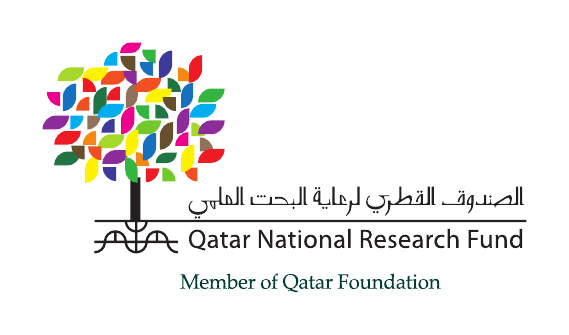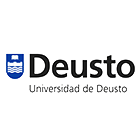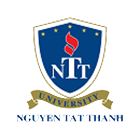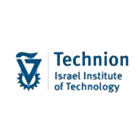Keynote 1 Ali Sadri

Intel Corporation, USA
Bio: Dr. Ali Sadri is a senior director of mmWave standards and advanced technology at Intel Corp. Sadri has more than 25 years of experience in academia and industry, beginning as a visiting professor at Duke University and working at IBM in N.C., and later joining Intel Corp. in California. His expertise is in wireless communications theory, channel modeling, power control, beamforming and adaptive modulation techniques. He holds more than 100 issued and pending patent applications in communications and wireless technologies. After successfully leading the WiGig Alliance and creating the first commercialized 60 GHz wireless standards, Sadri is extending the mmWave technology beyond WPAN. His current responsibilities include advanced technology development and prototyping of the future mmWave systems. Those systems include the next-generation WiGig technology for access and backhaul as well as the next-generation mmWave capable cellular systems (5G).
Enabling 5G Densification Utilizing mmWave Frequencies
Abstract: Increasing the capacity of next-generation backhaul and access networks is becoming one of the most challenging tasks of the industry this decade. As traditional mechanisms to increase spectral efficiency approach their theoretical limits, new and disruptive techniques are needed to satisfy the growing demand of mobile data traffic. Consequently, the fifth generation (5G) cellular access system is expected to make extensive use of small cells to increase the density and capacity by several hundred times in comparison with 4G systems. Not only cellular access, wireless backhaul solutions require increased density and capacity. While considerable focus has been rightfully put into exploiting licensed frequency bands below 6 GHz, the vast amount of licensed frequency spectrum in millimetre wave (mmWave) bands has seen little use by cellular access systems despite holding far greater potential for enhancing capacity. Not only licensed spectrum, unlicensed mmWave spectrums (57-63GHz) can be considered for wireless backhaul solutions. This presentation introduces novel architectures, beamforming, RFIC and manufacturing for mmWave capable small cells (MCSCs) with modular antenna arrays for backhaul and access. This architecture makes use of heterogeneous network components combined with the use of mmWave based technologies for the backhaul, fronthaul and access. We show that MCSCs can significantly increase capacity and density for backhaul and access systems.
Keynote 2 Leandros Tassiulas

Electrical Engineering & Institute for Network Science, Yale University, USA
Bio: Leandros Tassiulas is the John C. Malone Professor of Electrical Engineering at Yale University. His research interests are in the field of computer and communication networks with emphasis on fundamental mathematical models and algorithms of complex networks, architectures and protocols of wireless systems, sensor networks, novel Internet architectures and experimental platforms for network research. His most notable contributions include the max-weight scheduling algorithm and the back-pressure network control policy, opportunistic scheduling in wireless, the maximum lifetime approach for wireless network energy management, and the consideration of joint access control and antenna transmission management in multiple antenna wireless systems. Tassiulas is a fellow of IEEE (2007) and his research has been recognized by several awards including the inaugural INFOCOM 2007 Achievement Award “for fundamental contributions to resource allocation in communication networks,” the INFOCOM 1994 best paper award, a National Science Foundation (NSF) Research Initiation Award (1992), an NSF CAREER Award (1995), an Office of Naval Research Young Investigator Award (1997) and a Bodossaki Foundation award (1999). He holds a Ph.D. in electrical engineering from the University of Maryland (1991). He has held faculty positions at Polytechnic University, New York, the University of Maryland and the University of Thessaly, Greece.
Towards Full Radio Spectrum Exploitation: Traffic Offloading, User Provided Networks and Effective Spectrum Sensing
Abstract: TThe proliferation of mobile Internet access poses new challenges to wireless service providers as the capacity growth of their networks cannot cope with the rate of increase of mobile wireless traffic. Alternate means are considered to deal with the excessive traffic demand, means that exploit the proliferation of wireless networks in unlicensed parts of the spectrum as well as of handheld devices with multiple radio interfaces. Traffic offloading from the cellular network to a Wi-Fi access point is possible for mobile users with wireless interfaces for both networks. We will present schemes that motivate operators, access-point owners and users to cooperate in order to maximize use of available capacity in the different networks; the schemes are based on double auction mechanisms. In an alternate approach, a mobile user may gain Internet access when another user with cellular Internet connection is willing to relay its traffic received through a direct link between the users. We will present incentives mechanisms that facilitate the creation of such user-provided networks in a way that all participants gain in terms of access capacity as well as energy consumption. Finally a methodology for measuring spectrum-sensing delay and energy consumption of various cognitive radio platforms will be presented as well as the related results in some typical experimental scenarios.
Keynote 3 Mohamed-Slim Alouini

King Abdullah University of Science and Technology (KAUST), Saudi Arabia
Bio: MMohamed-Slim Alouini (S’94, M’98, SM’03. F’09) was born in Tunis, Tunisia. He received the Ph.D. in electrical engineering from the California Institute of Technology (Caltech) in the United States in 1998. He served as a faculty member in the University of Minnesota, USA, then at Texas A&M University at Qatar before joining King Abdullah University of Science and Technology (KAUST) in Saudi Arabia as a professor of electrical engineering in 2009. His current research interests include the modelling, design and performance analysis of wireless communication systems. He is an IEEE fellow.
Addressing Spectrum Scarcity through Cognitive Radio and Free Space Optical Communications
Abstract: Abstract: The concept of cognitive networks has emerged as an efficient means for utilizing the scarce spectrum by allowing spectrum sharing between a licensed primary network and a secondary network. In this talk, we briefly present an overview of various recently proposed types of cognitive networks and then discuss some fundamental capacity results of these networks. The talk will then discuss the potential offered by free space optical communications to relieve spectrum scarcity and then summarize some of the challenges that need to be surpassed before such kind of systems can be massively deployed.
Keynote 4 Halim Yanikomeroglu

Carleton University, Canada
Bio: Halim Yanikomeroglu was born in Giresun, Turkey, in 1968. He received the B.Sc. in electrical and electronics engineering from the Middle East Technical University in Ankara, Turkey, in 1990, and the M.A.Sc. in electrical engineering (now ECE) in 1992 and the Ph.D. in electrical and computer engineering from the University of Toronto in Canada in 1998. During 1993–1994, he was with the R&D Group of Marconi Kominikasyon A.S. in Ankara, Turkey. Since 1998 he has been with the Department of Systems and Computer Engineering at Carleton University in Ottawa, Canada, where he is now a Full Professor. His research interests cover many aspects of wireless technologies with a special emphasis on cellular networks. He has been co-author of more than 60 IEEE journal papers, and has given many tutorials and invited talks on wireless technologies at leading international conferences. In recent years, his research has been funded by Huawei, Blackberry, Samsung, Telus, Communications Research Centre of Canada (CRC) and Nortel. This collaborative research resulted in about 20 patents (granted and applied). Yanikomeroglu has been involved in the organization of the IEEE Wireless Communications and Networking Conference (WCNC) from its inception, including serving as steering committee member and technical program chair or co-chair of WCNC 2004 (Atlanta), WCNC 2008 (Las Vegas) and WCNC 2014 (Istanbul). He was the general co-chair of the IEEE Vehicular Technology Conference in fall 2010 held in Ottawa. He has served in the editorial boards of the IEEE Transactions on Communications, IEEE Transactions on Wireless Communications and IEEE Communications Surveys & Tutorials. He was chair of the IEEE’s Technical Committee on Personal Communications (now called Wireless Technical Committee). He is a distinguished lecturer for the IEEE Communications Society (2015–2016) and the IEEE Vehicular Technology Society (2012–2015). Yanikomeroglu is a recipient of the IEEE Ottawa Section Outstanding Educator Award in 2014, Carleton University Faculty Graduate Mentoring Award in 2010, the Carleton University Graduate Students Association Excellence Award in Graduate Teaching in 2010, and the Carleton University Research Achievement Award in 2009. He spent the 2011–2012 academic year at TOBB University of Economics and Technology in Ankara as a visiting professor and is a registered professional engineer in the province of Ontario, Canada.
The 5G+ HetHetNets Paradigm: Spatially Heterogeneous Traffic in Heterogeneous Cognitive Networks
In future wireless networks the traffic demand is expected to become increasingly heterogeneous and unpredictable in both space and time. The supply (wireless access) side of the network will also be increasingly heterogeneous due to various types of access points (macro, pico, and femto) with varying backhaul limitations. In addition, the amount of bandwidth available to these access points will vary in space and time with the advent of the cognitive radio paradigm. We refer to the networks in which both the supply and the demand are highly heterogeneous as HetHetNets. In the 5G+ HetHetNets with unpredictable demand and highly varying supply, the demand and supply will rarely match in space and time; this situation will create unprecedented challenges. In this talk, a number of mechanisms to bring the supply and demand closer in space and time will be discussed including the novel user-in-the-loop approach along with the resource allocation, multihop relaying, and MIMO beamforming techniques. It should be noted that the performance of the legacy resource allocation techniques in HetHetNets remains unclear. Stability and robustness analyses of the well-known algorithms have to be conducted as a function of the increased heterogeneity and unpredictability. When necessary, novel resource allocation algorithms designed specifically for the HetHetNet scenarios have to be employed. In order to enable further studies in the area of HetHetNets, an efficient way of modelling the highly heterogeneous spatial traffic with as few parameters as possible in a tunable and scalable manner will also be introduced in this talk.
Keynote 5 George Chrisikos
Qualcomm Inc., USA
Bio: George Chrisikos is responsible for advanced technology development at Qualcomm Inc., and has been working in the research, design and development of communication systems and algorithms for wireless and satellite applications. His focus includes heterogeneous networks, radio coexistence, connection management, multiple antenna systems, D2D, GNSS and 5G technology. He was previously engineering director and systems product manager at AWR Inc., where he was responsible for architecting and leading the development of a simulation technology product that gained widespread adoption by the wireless communication industry worldwide. Chrisikos is a fellow of the IEEE and an IEEE distinguished lecturer. He received the 2014 IEEE Kiyo Tomiyasu Award, the Aerospace Corporate Achievement Award and the IEEE Radio Communications Committee Outstanding Service Award. He is a guest editor of the upcoming IEEE JSAC Special Issue on Device-to-Device Communications in Cellular Networks, and is on the IEEE Communication Letters advisory board. Chrisikos received the Ph.D. in electrical engineering from the University of Southern California in Los Angeles under the USC Dean's Doctoral Merit Fellowship. He received the M.S. and B.S. degrees in electrical engineering as a presidential scholar. He graduated summa cum laude with distinction and was the valedictorian of his class.
Challenges and Opportunities in Cognitive Radio Deployments
The burgeoning demand for wireless access is driving the technological adoption of more sophisticated radio access techniques that employ efficient spectrum utilization. At the same time, spectrum scarcity is forcing the industry and regulators to find more creative ways to utilize this finite resource, leading to spectrum management policies and strategies for cognitive networks. Cognitive radio techniques are proposed for the coexistence of various radio access technologies motivated by the need to opportunistically use spectrum while respecting authorized licensed users. Proposals include spectrum awareness using sensing and databases, together with spectrum aggregation across licensed, unlicensed, and shared access bands. In this talk we will present developing techniques for capacity improvement including the auctioning of cleared spectrum, the role of whitespace bands, shared access with incumbent holders to use underutilized spectrum, and use cases in unlicensed operation including new proposals in LTE Licensed Assisted Access (LAA) with carrier aggregation in the Wi-Fi bands. We will also discuss some of the challenges in implementing reconfigurable cognitive radios from the RF perspective including tunability and frequency agility.
Keynote 6 Hesham El Gamal
Ohio State University
Bio: Hesham El Gamal received the B.S. and M.S. degrees in electrical engineering from Cairo University, Egypt, and the Ph.D. in electrical and computer engineering from the University of Maryland, USA. He is a professor of electrical and computer engineering at the Ohio State University and the CEO of Inmbly Inc. He is a fellow of the IEEE, and is a recipient of the HNS Annual Achievement Award, the OSU College of Engineering Lumley Research Award, the OSU Electrical Engineering Department FARMER Young Faculty Development Fund, The OSU Stanley E. Harrison Award, the OSU Innovator of the Year Award and the National Science Foundation CAREER Award. He holds key intellectual property in the areas of proactive communications, space-time coding/decoding and graphical code design. He has held visiting appointments at the University of California, Los Angeles, Institut Eurecom and Nile University. He has served as an associate editor for the IEEE Transactions on Communications, IEEE Transactions on Mobile Computing and IEEE Transactions on Information Forensics and Security; a guest editor for the IEEE Transactions on Information Theory special issue on cooperative communications; a guest associate editor for the IEEE Transactions on Information Theory; a member of the SP4COM technical committee; and co-chair of the Globecom'08 communication theory symposium and the 2010 IEEE Information Theory Workshop..
Towards A Marketplace for Mobile Content: Proactive Pre-Caching and Dynamic Pricing
In this talk, I will introduce the notion of a marketplace for sharing mobile content based on the work of my research group in the area of proactive pre-caching and dynamic pricing. The talk will give an overview of our recent results that use tools for large deviation theory, optimization and game theory to establish the significant potential of the new paradigm. Finally, I will conclude with a discussion on future research directions inspired by our work and leading to the foundational development to what can be referred to as contextual information theory.”








.jpg)

































